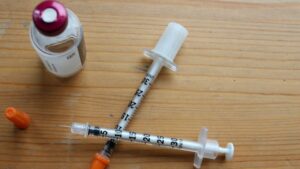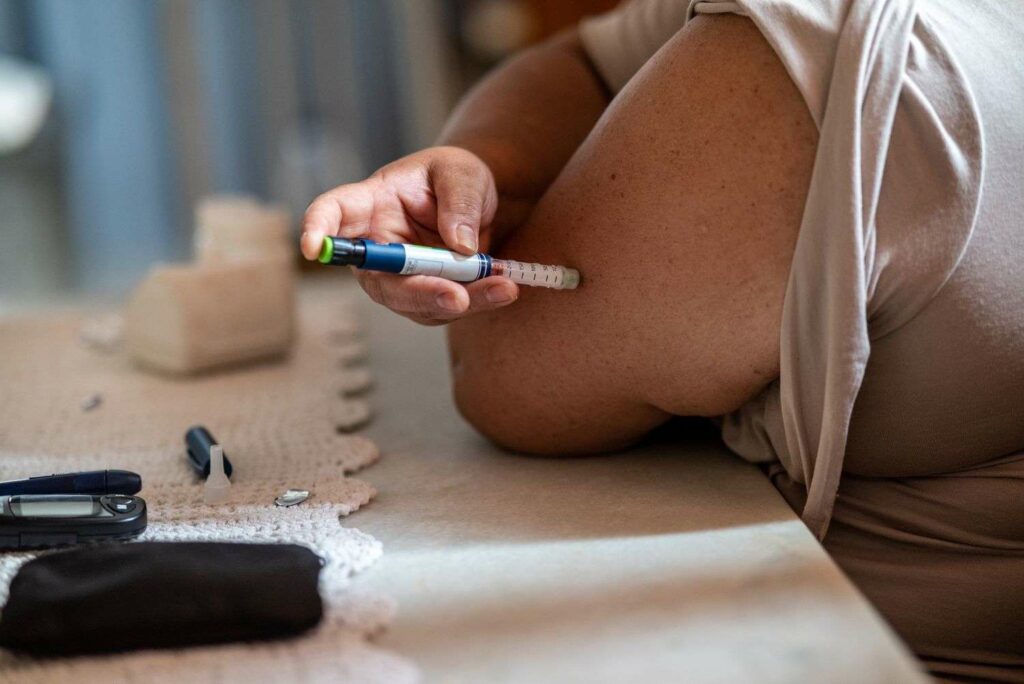Diabetes, a chronic condition affecting millions worldwide, necessitates careful management, with insulin therapy playing a pivotal role for many. Insulin, a lifesaving medication, can be a significant financial burden for patients, especially without adequate insurance coverage. This blog aims to shed light on the various aspects of insulin injection costs, offering insights and practical tips to help patients manage these expenses effectively.
Contents
What Is The Cost Of One Insulin Injection?
 The average insulin injection cost in India is indeed relatively affordable compared to many other countries, often ranging between 100 to 200 Indian Rupees. This affordability is attributed to several factors, including the presence of generic drug manufacturers, government price controls, and a competitive pharmaceutical market.
The average insulin injection cost in India is indeed relatively affordable compared to many other countries, often ranging between 100 to 200 Indian Rupees. This affordability is attributed to several factors, including the presence of generic drug manufacturers, government price controls, and a competitive pharmaceutical market.
It’s important to remember that this range is an average and the actual cost can vary based on:
- Type of Insulin: Different types of insulin (such as rapid-acting, long-acting, and premixed) can have different costs.
- Brand and Manufacturer: Prices can vary between different brands and manufacturers, with generic versions typically being more affordable.
- Packaging and Volume: Insulin is available in vials, pens, or cartridges. And the pricing can differ based on the packaging and the volume of insulin it contains.
- Dosage Requirements: The cost per injection can also depend on the dosage prescribed by a healthcare provider.
- Retail Outlet: Prices might vary between different pharmacies and locations within India.
It’s worth noting that the prices are subject to change due to market dynamics, government policies, and other factors. Patients requiring insulin should consult with healthcare providers or local pharmacies for the most current information on insulin pricing and availability. Additionally, it’s advisable to explore any government or pharmaceutical assistance programs that might offer insulin at reduced prices or for free to those who qualify.
What Is The Monthly Cost Of Insulin Injection?
The monthly insulin injection cost can vary significantly based on factors like the type of insulin, dosage requirements, and geographical location. However, to provide a general estimate:
- United States: Generally, the monthly cost of insulin in the U.S. could range from several hundred to over a thousand U.S. dollars, depending on the type and amount of insulin needed. This high cost is often due to the lack of price regulation and the high prices set by pharmaceutical companies.
- India: In contrast, in India, where insulin tends to be more affordable, the monthly cost could be substantially lower. If we consider the average cost of one insulin injection to be around 100 to 200 Indian Rupees, and assuming a daily injection, the monthly cost could range from approximately 3,000 to 6,000 Indian Rupees.
- Other Countries: In countries with universal healthcare systems or significant pharmaceutical subsidies, the out-of-pocket cost for insulin could be much lower, sometimes minimal, or even free for the patient.
These are broad estimates and actual costs can vary. Patients should consult with healthcare providers or pharmacies in their specific location for accurate and current pricing.
How Many Insulin Injections Per Day?
The number of insulin injections a person requires per day depends on their diabetes management plan. This is tailored to their specific health needs. Typically, patients with Type 1 diabetes, who are entirely dependent on insulin, may require multiple daily injections. The regimen often includes a combination of long-acting insulin. It provides a steady level of insulin throughout the day and night, and rapid-acting insulin is taken before meals to manage blood sugar spikes.
The standard practice can range from two to four injections per day. However, some patients may need more depending on their blood sugar levels and how their bodies respond to insulin. For Type 2 diabetes patients, the requirement for insulin injections can vary widely. Some may manage their condition with oral medications and lifestyle changes and might not need insulin at all. While others may require insulin therapy. Those who do need insulin might start with a single daily injection, often of a long-acting type.
However, as Type 2 diabetes progresses, they might need to increase the number of injections to better control their blood sugar levels. The specific regimen is highly individualized and is determined by the healthcare provider based on various factors.
What Are The Different Types Of Insulin Injections?
 Insulin injections are categorized based on how quickly they start to work (onset) when they peak in their effectiveness, and how long they last (duration). Here are the main types of insulin used in the treatment of diabetes:
Insulin injections are categorized based on how quickly they start to work (onset) when they peak in their effectiveness, and how long they last (duration). Here are the main types of insulin used in the treatment of diabetes:
Rapid-Acting Insulin
- Onset: Begins to work approximately 15 minutes after injection.
- Peak: Peak around 1 to 2 hours after injection.
- Duration: Continues to work for 2 to 4 hours.
- Examples: Insulin lispro (Humalog), insulin aspart (NovoLog), insulin glulisine (Apidra).
- Usage: Typically taken before a meal to cover the blood sugar spike that comes from eating.
Short-acting or Regular Insulin
- Onset: Begins working within 30 minutes.
- Peak: Peak between 2 to 3 hours after injection.
- Duration: Effective for about 3 to 6 hours.
- Examples: Regular (R) human insulin (Humulin R, Novolin R).
- Usage: Usually taken about 30 minutes before a meal.
Intermediate-Acting Insulin
- Onset: Starts working 1 to 2 hours after injection.
- Peak: Peak 4 to 12 hours later and can last for 12 to 18 hours.
- Examples: NPH (N) insulin (Humulin N, Novolin N).
- Usage: Often combined with rapid- or short-acting insulin.
Long-Acting Insulin
- Onset: Takes several hours to start working.
- Peak: Provides a steady, low level of insulin (some have no clear peak).
- Duration: Can last up to 24 hours or more.
- Examples: Insulin glargine (Lantus, Basaglar), insulin detemir (Levemir), insulin degludec (Tresiba).
- Usage: Typically taken once or twice a day to provide background insulin.
Ultra Long-Acting Insulin
- Onset: Starts working several hours after injection.
- Peak: Provides a very stable insulin level (no pronounced peak).
- Duration: Can last more than 24 hours.
- Examples: Insulin degludec (Tresiba) is often classified in this category.
- Usage: Designed for once-daily dosing to provide all-day blood sugar control.
Each type of insulin is suited to different patterns of blood sugar fluctuations and lifestyle factors. The choice of insulin type and regimen is highly individualized and is typically decided by a healthcare provider in consultation with the patient.
Why Insulin Is So Expensive?
 Insulin is expensive due to a combination of complex factors, especially in countries like the United States where the prices are particularly high:
Insulin is expensive due to a combination of complex factors, especially in countries like the United States where the prices are particularly high:
Lack of Generic Competition
Unlike many other drugs, insulin has relatively few generic alternatives (known as “biosimilars” for biological drugs like insulin). This is partly because insulin is more complex to manufacture than many other medications. The production process involves living cells and requires significant expertise and investment, creating a barrier to entry for potential competitors.
Patent Practices
Insulin manufacturers have been criticized for a practice known as “evergreening,” where they make small modifications to their insulin products and apply for new patents. Thereby extending their exclusivity period and preventing cheaper alternatives from entering the market.
Pricing and Market Dynamics in the U.S.
In the United States, drug prices are largely determined by market forces, unlike in many other countries where governments negotiate or regulate prices. The lack of price controls, coupled with the complex system of pharmacy benefit managers (PBMs), insurers, and other middlemen, often results in higher prices for consumers.
Insurance and Coverage Issues
The high out-of-pocket costs for insulin can also be attributed to the structure of insurance coverage in the U.S. High deductibles, copays, or limited formulary coverage can contribute to the financial burden on patients.
Research and Development Costs
Pharmaceutical companies also argue that the high prices are necessary to recoup the substantial costs associated with researching and developing new and more effective insulin products, as well as to fund ongoing innovation.
Regulatory Barriers
The process for approving biosimilar insulins is more complex and costly than for most other generic drugs, which can deter some manufacturers from entering the market.
Global Market Differences
In many other countries, governments take a more active role in regulating drug prices or have different healthcare systems. This can lead to significantly lower prices for insulin.
It’s important to note that these factors can vary significantly between different countries and regions. In some places, like India and parts of Europe, insulin prices are much lower due to government price controls, generic competition, and different healthcare system dynamics.
Conclusion
In conclusion, understanding the insulin injection cost is crucial for those managing diabetes. Insulin injections, varying in types from rapid-acting to long-acting, are tailored to fit individual needs and lifestyles. While the cost can be a concern, it’s important to remember that prices can vary widely depending on location, insurance, and the specific type of insulin.
Despite the challenges, advancements in insulin therapy continue to improve the lives of those with diabetes, offering more effective and convenient treatment options. Always consult with healthcare professionals to find the most suitable insulin regimen. Do you want to get rid of diabetes? Join our online diabetes treatment program and reverse Diabetes naturally through lifestyle changes such as a Personalized Diet plan, Exercise, Yoga, dieticians, and health coaches.

